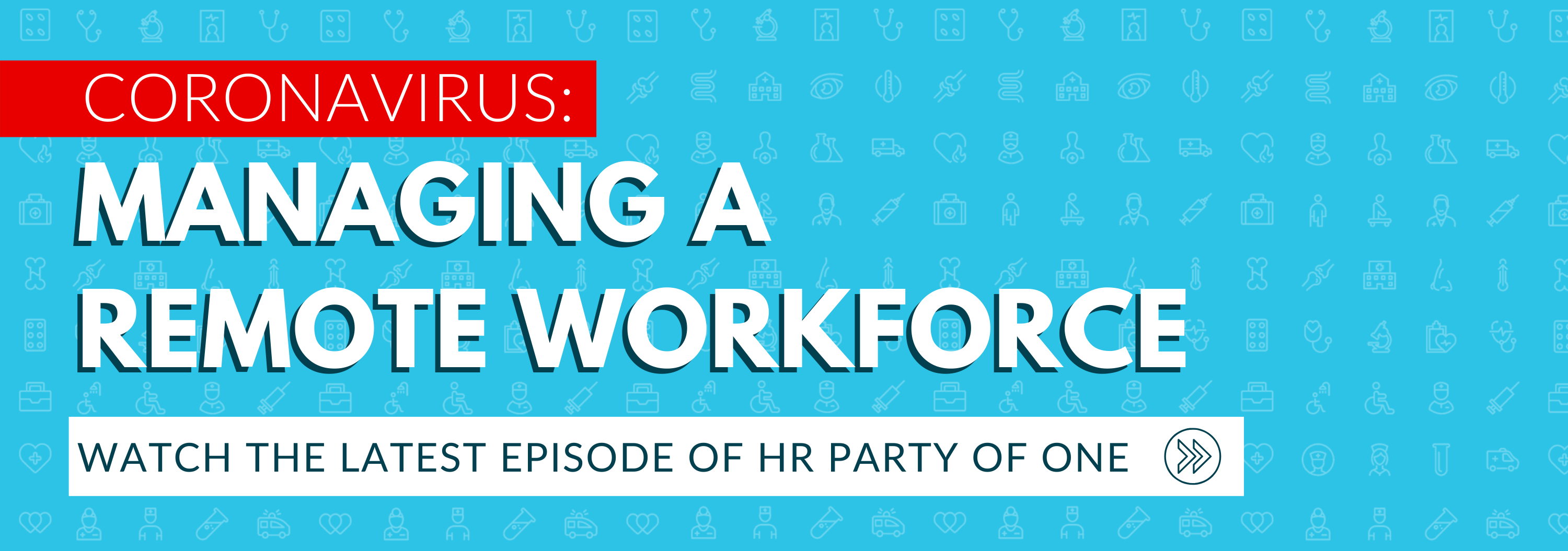
Written by
Drew Gieseke
Drew Gieseke is an aPHR®-certified marketing professional who writes about HR, compliance, and healthcare solutions.
5 Ways HR Teams Can Help Parents with Remote Work

COVID-19 continues to complicate. Safety concerns and losses in business aside, work-from-home families are struggling to teach and raise children during shelter-in-place orders. With fall school openings uncertain and childcare centers struggling to return to normal operations, what can HR do to help parents on remote teams?
What’s the Issue?
According to Vox, more than 41 million American workers have children under 18—and almost all lost childcare as a result of COVID-19. Schools and daycares in each state closed, impacting 55.1 million kids grades K-12. Additionally impacted were 5 million kids in daycares and preschools. Uncertainty remains as to whether or not these facilities will be able to reopen this fall.
Parents were left on the hook for childcare. An April poll conducted by Morning Consult for the New York Times found that 80% of women with children under 12 “do most or all of the housework and oversee homeschooling, and 70% say they do most of the child care.” More concerning still, 2017 Pew Research Center data found that nearly 16% of parents in the U.S. were single, amounting to “about 18 million children living in homes with just one parent.”
How do parents balance childcare, education, and remote work—and what can HR do to help?
5 Ways HR Teams Can Help
As an HR professional, it’s your responsibility to recognize that these issues can and will arise for parents on your team. There are several steps that you can take to manage remote teams and assist working parents as they navigate the difficulties of caring for their children while tackling day-to-day work projects.
Consider the following measures:
- Develop a Reopening Plan: From what to do if an employee tests positive for COVID-19 to how you’ll keep team members socially distant, a reopening plan provides a framework for how you’ll operate in-person during the pandemic. This can and should include how you’ll work with parents when they face childcare concerns.
- Extend Telework Accommodations: Ultimately, it’s up to you and your team to decide whether or not to extend remote work operations. But, if you’ve already returned to the office, consider including a provision in your reopening plan about granting telework accommodations to parents with children stuck at home.
- EAP Reminder: Remind your workers about the employee assistance programs (EAPs) that are provided by your organization! An EAP is a benefit that assists workers with personal or work-related problems and can include short-term counseling to handle stress and grief.
- Connect Teammates: As mentioned in episode 20 of HR Party of One, encourage your employees to reach out to other parents to share advice and experiences.
- Family Leave Education: Under the Families First Coronavirus Response Act (FFCRA), employees are entitled to paid sick and family leave relating to childcare and COVID-19. See the section below for more information.
COVID-19 Family Leave: Explained
Two key provisions were included in the FFCRA that address how employers handle childcare concerns that workers face. These include:
- Two Weeks of Paid Sick Leave at Two-Thirds Rate: Covered employers must provide all employees with two weeks (up to 80 hours) of paid sick leave at two-thirds their regular rate of pay if the employee is unable to work due to a “bona fide need to care for an individual subject to quarantine.” This provision also applies to care for a child (under 18) whose school or childcare provider is unavailable or closed as a result of COVID-19.
- Additional 10 Weeks of Paid Expanded Family and Medical Leave: If a worker has been employed for at least 30 days, covered employers must provide 10 weeks of paid expanded family and medical leave at two-thirds their regular rate of pay if the employee cannot work “due to a bona fide need for leave to care for a child whose school or child care provider is closed or unavailable for reasons related to COVID-19.”
For more details on new and updated guidelines for paid and unpaid leave requirements, read the following BerniePortal blog.

Written by
Drew Gieseke
Drew Gieseke is an aPHR®-certified marketing professional who writes about HR, compliance, and healthcare solutions.
Related Posts
Yes, you can use a health savings account, or HSA, for cosmetic surgery, but only in...
According to the KPMG 2023 CEO Outlook, 64% of business leaders believe there will be a...
Thomas J. Peters, best known for his book In Search of Excellence, once stated, “The day...
According to the Ethics and Compliance Initiative’s (ECI) 2023 Global Business Ethics...







Submit a Comment